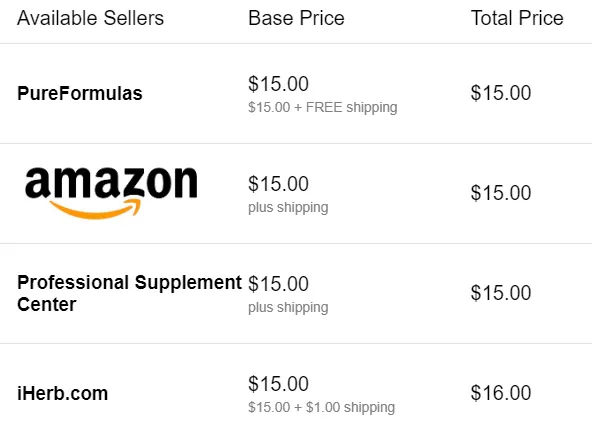Channel Conflict: How to Protect Your Brand
Protecting your brand from channel conflict is an essential piece of successful ecommerce. Pattern's channel conflict solutions can help your ecommerce!

Expanding your product distribution beyond the brick and mortar and into the omnichannel is an exciting next step for your business with a myriad opportunities for growth. But growing a business does not come without growing pains, and one of the peskiest pains is channel conflict.
What is channel conflict?
According to the Investors Book, channel conflict is “any dispute, difference, or discord arising between two or more channel partners, where one partner’s activities or operations affect the business, sales, profitability, market share, or similar goal accomplishment of the other channel partner.” Essentially, once a manufacturer has moved their products beyond one channel, like their brick and mortar channel, to a more competitive arena like Amazon, it can create friction and issues that negatively impact their relationship with their channel partners and can evolve to hurt their long-term growth.
What causes channel conflict?
Channel conflict can happen for a variety of reasons, but there are three main areas of conflict you should know about. The three types of channel conflict are:
Vertical Conflict: when two parties at different levels of the distribution chain have a dispute. An example of a vertical conflict is when a manufacturer sidesteps retailers to sell direct-to-consumer, making themselves competition for the wholesalers, sales reps, and retail partners who sell their product. Vertical conflict also happens when a manufacturer allows too many retailers to distribute their product, creating fierce competition and ultimately hurting sales.
Horizontal Conflict: when retailers at the same level compete amongst each other. Horizontal conflict happens when a retailer drops their pricing to drive more traffic to their store and then upsells more expensive product to make up the difference on margins, forcing other retailers to drop their own prices to compete. Horizontal conflict also happens when multiple wholesalers or retailers are operating in the same area, creating turf wars.
Multi-Channel Conflict: when two or more of a manufacturer’s channels compete against each other to sell in the same market at different prices.
What are the effects of channel conflict?
Ecommerce is expected to reach 12.4% of total retail sales in the U.S. That doesn’t make ecommerce insignificant—many brands are making hundreds of millions of dollars selling their products online. But what happens when your 12.4% of ecommerce sales begin to destroy your other 87.6% of sales? Let’s say customers start using your brick and mortar retailers as showrooms for your product, because the price of that product is cheaper online. You may very quickly find your relationship with those brick and mortar retailers ending as your ecommerce sales reduce sales volume at their store.

Channel conflict also creates confusion among consumers. Tools like PriceBlink allow consumers to easily compare prices across marketplaces. If they see different pricing on different channels, consumers may wonder if they’re being overcharged when prices are high, and whether they’re receiving authentic products when prices are low.
This causes both your brand and your product to lose its value. When pricing is different across channels, consumers may delay making a purchase to ensure they get the best deal, or if they do make a purchase, they may regret it after seeing a better price online, and your return rates will go up as a result. Thus, the buying experience is also negatively impacted due to channel conflict.
How do you resolve channel conflict?
Omnichannel selling doesn’t have to be synonymous with channel conflict. There are a number of ways to ensure your channels live in harmony with each other:
1. Establish MAP pricing
Creating a MAP policy tells your distributors the price they should be selling at. It also assures them that you won’t undercut their prices online. Your brand can enforce your MAP policy across marketplaces with the help of a legal partner. By doing so, it ensures your other channel partners that you’ll play fair.
2. Clean up your supply chain and limit your distribution
Many brands scale their distribution in attempt to grow revenue quickly, but when too many distributors have their hands in the pie, they’re harder to control, and this can destabilize your supply chain. Leaky supply chains often result in unauthorized distributors selling your product, and unauthorized sellers don’t share the same incentives you do.
Their primary goal is to sell their stock, and because they’re likely unaware of or don’t care about your MAP policy, pricing will be all over the place, exacerbating your channel conflict. The more limited your distribution, the more control you have and the less likely leaks and multi-channel conflict is to happen.
3. Establish your brand across marketplaces
If your brand is widely distributed, odds are someone is selling it on Amazon, eBay, Walmart.com, or any number of specialized ecommerce sites, such as Houzz or Newegg. While managing multiple ecommerce channels can be difficult, by selling products yourself on these marketplaces—where people are already searching for your products—you can play defense for your brand and homogenize the customer experience across all of your channels so it’s consistent, high quality, and in your control.
These are just some of the ways that Pattern brand partners have found success in eliminating channel conflict. It requires continuous effort, but the reward is happy retail partners and a seamless customer experience wherever customers want to find your product.
Product Case Study - Thorne Research Vitamin D-5000
Consistent product experience across the top two U.S. ecommerce marketplaces have lead to price parity with Thorne’s own DTC Site, Amazon, and Walmart. PriceBlink results showing price parity across retailers:

Want to know how you can grow your brand online while maintaining strong relationships across your distribution network? Reach out to Pattern to learn more.




.png)
.jpg)
